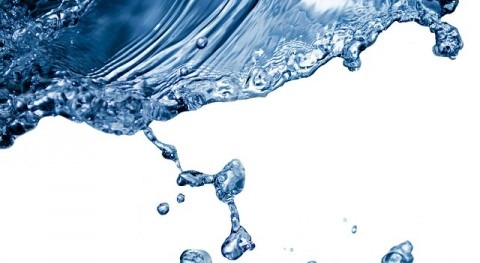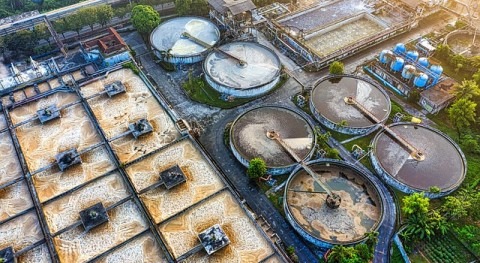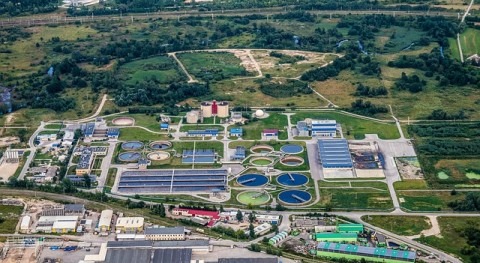What Percentage of Water is Desalinated?

Desalination is the process of removing salt and other minerals from seawater or brackish water to produce drinking water. It is an important process for providing clean water in arid regions where freshwater is scarce. But what percent of water is actually desalinated?
According to a report by the United Nations World Water Development, only 1% of the world's water is desalinated. Most of the world's drinking water comes from freshwater sources such as rivers, lakes, and underground aquifers. However, the demand for desalinated water is increasing, particularly in regions where freshwater supplies are limited.
1 . Advantages and Disadvantages of Desalination
Desalination has several advantages, including:
- Providing a reliable source of drinking water in regions where freshwater is scarce or contaminated.
- Reducing the dependence on freshwater sources that may be subject to droughts or other natural disasters.
- Helping to meet the growing demand for water in urban areas with rapidly increasing populations.
However, desalination also has several disadvantages, including:
- High energy consumption, which can increase greenhouse gas emissions.
- High costs compared to other sources of freshwater.
- The discharge of brine and other pollutants back into the ocean, which can harm marine ecosystems.
2 . Challenges of Desalination
Despite its many benefits, desalination still faces some challenges. The process is energy-intensive and can be expensive, making it difficult to implement on a large scale. Additionally, the brine discharge from desalination plants can have negative environmental impacts.
However, ongoing research and innovation are addressing these challenges. New technologies are being developed to reduce energy consumption and increase efficiency, while also minimizing the environmental impact of brine discharge.
For example, some researchers are exploring the use of renewable energy sources such as solar and wind power to drive desalination processes. Others are working on developing more efficient membrane materials to reduce energy requirements.
As these advancements continue, the future looks promising for desalination as a sustainable and reliable source of fresh water.
3 . Technologies Used for Desalination
There are several technologies used for desalination, including:
- Reverse osmosis: the most common technology used for desalination, which involves using a semipermeable membrane to remove salt and other minerals from seawater
- Distillation: a process that involves boiling seawater and condensing the steam to produce freshwater
- Electrodialysis: a process that uses an electrical current to remove salt from seawater
Each of these technologies has its own advantages and disadvantages, and the choice of technology depends on factors such as the quality of the feedwater, the desired product water quality, and the availability of energy and other resources.
4 . Top Countries Where Desalination Plays a Crucial Role
The countries where desalination is most important can be determined based on several criteria, including population size, water scarcity, and economic resources.
Some of the countries that rely heavily on desalination to meet their water needs include Saudi Arabia, United Arab Emirates, Israel, Kuwait, and Australia. These countries have either limited freshwater resources or are located in arid regions, making desalination a necessary solution to ensure access to clean and safe water for their populations.
Other countries such as China, Spain, and the United States are also increasing their reliance on desalination to meet their water demands due to the growing scarcity of freshwater resources.
5 . Desalination's Role in Adapting to Climate Change
As climate change continues to have significant impacts on the availability of freshwater resources, desalination is emerging as a crucial tool in helping communities adapt. Desalination plants can provide a reliable source of freshwater that is not dependent on rainfall or other weather patterns, making them a valuable resource in regions that are experiencing prolonged drought or reduced snowpack. Additionally, as sea levels rise, saltwater intrusion into coastal aquifers is becoming an increasingly serious problem, and desalination can help prevent the contamination of these vital freshwater resources.
While desalination can be expensive and energy-intensive, advances in technology and increased research are making it a more sustainable and viable solution for communities facing water scarcity due to climate change.
6 . Conclusion
In conclusion, desalination plays a vital role in providing clean and safe drinking water to people living in arid regions or areas with limited freshwater supplies. The technology has both advantages and disadvantages, and ongoing research is addressing the challenges of high energy consumption and brine discharge. The countries where desalination is most important can be determined based on factors such as population size, water scarcity, and economic resources. As climate change continues to impact the availability of freshwater resources, desalination is emerging as a crucial tool in helping communities adapt. With continued advancements in technology and increased research, desalination has the potential to become a sustainable and viable solution for addressing the growing demand for freshwater resources.






